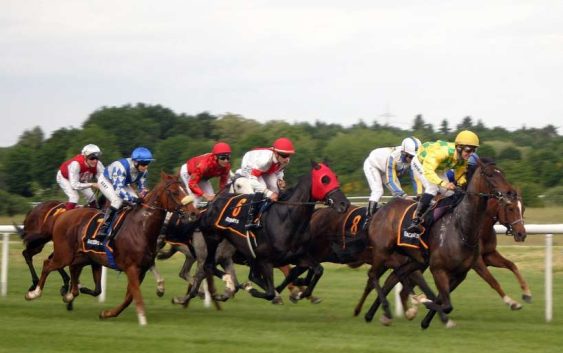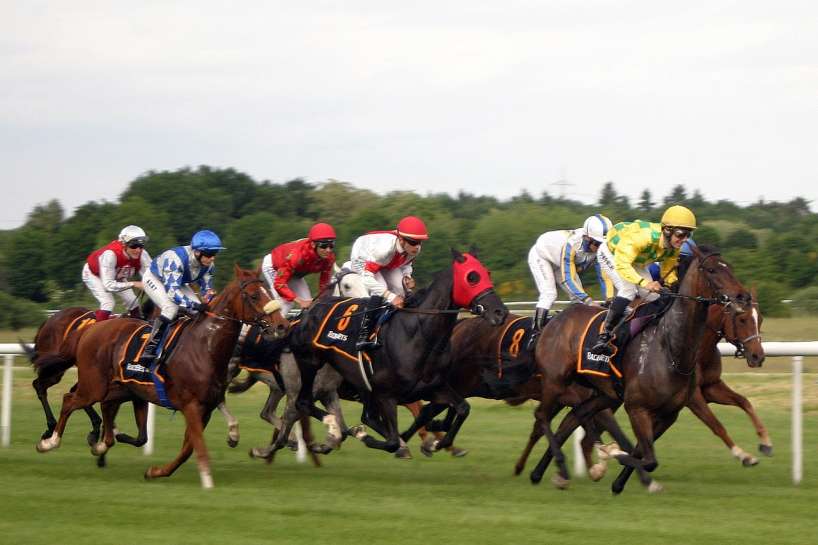Horseracing has many variants. They are like slot machines in online casinos where you can get bonuses such as the Vulkan Bet 50 free spins. With horseracing, you get to pick your horse, but you can also bet on several simultaneous events if you want to.
To make the best out of your money, it makes sense to understand the different types of horse racing.
1. Flat Race
The first type is the flat race, and this is what we typically see on television. Flat races typically happen in racetracks that are 400 meters long. Most are only one mile in length. Even in computer games, the most common racing that you will find is flat races.
Racetracks have different characteristics. Some have grass, and some have dirt only. Most are oval, and some have an 8-figure style.
Flat races have different divisions. The most common ones are:
Maiden – reserved for horses that have never won any competition;
Claiming – the horses that can participate here must be for sale;
Allowance – requires horses to be at a certain weight, like boxing weight divisions;
Stake – horses that race here are the cream of the crop; they are the best horses.
Stake races are like championship events that have different grades. These are grades 1 to 3. Grade 1 is the highest among all of them.
2. Steeplechase Racing
This type of horserace has been around since the 1700s and began in Ireland. Historians, however, say that it has been around since the 4th century BCE.
What makes it different from the flat race is that a steeplechase has obstacles. There are plain fences, open ditches, and some tracks even have water jumps. These races have tracks that can be up to four miles long.
You may hear of jump racing as a term. Jump racing and steeplechase are the same. In the UK, they call it National Hunt Racing. There are many events in steeplechase, and it accounts for more than 50% of the races held in the country.
In a jump race, you must take into account the dexterity of the horse and how the jockey guides it to go over obstacles. If a horse is as efficient as it should be, it is not likely to fall. The jumping abilities of the horse are a critical factor in winning this round. If it fails to maneuver, then the horse will lose traction, momentum, and speed.
3. Endurance Racing
The third most popular type of horseracing has something to do with perseverance or tenacity. The horses that participate in this race can endure long rides and complex obstacles. This race can even involve mountains, harsh terrains, and rivers. Stamina is a key factor not only for the horse but also for the rider.
The thing with an endurance race is that it is not as exciting as a flat one. You cannot expect horses to gallop at blazing speeds. An endurance race can last between 5 and 150 miles, so you can just imagine the stamina required for a horse and a rider to win.
In addition, an endurance race lasts for days. The riders and the horses have to take breaks. The longest endurance race is the Mongol Derby. It is over a thousand kilometres and lasts ten days to complete. Only a few riders and horses finish this race, so finishing it, even if not in the first place, is an accomplishment in itself.
4. Harness Racing
The last type of horse racing involves a chariot. The horse has to pull the chariot and the driver, similar to what the ancient Romans did in the past. Harness racing can involve two horses, one or even four. In ancient times, chariot races were usually six miles long. Today, the most common races are only one mile long.
In a harness race, the chariots are known as sulkies. The horses either trot or pace as they pull these sulkies — they do not run. The sulkies can only fit one person. As the driver, this person must be strategic enough to guide his horse or horses on the racetrack. Usually, the shores breed that they use for this race is the Standard breed, which has a good temperament. It is also a breed that easily conforms to what the driver wants to do.
There are more than 300 horse breeds in the world, and not all of them are built for racing. Because of this variation in their breed, horse racing organisers also made it a point to create different types of races.
Whether you are a sports bettor or a fan, it would serve you well if you knew different types of races. Not only will you make better decisions, but you will also manage your expectations as you progress in your interest in races.





